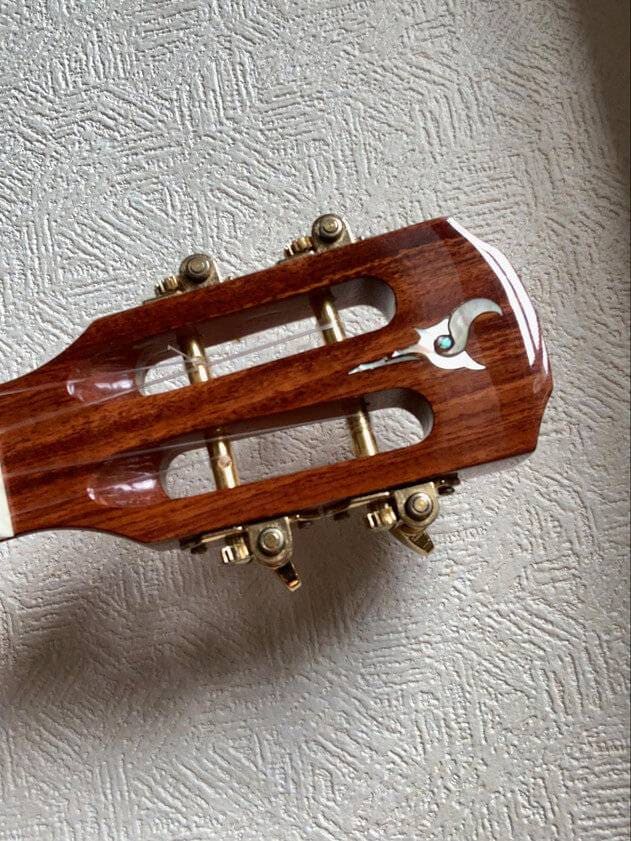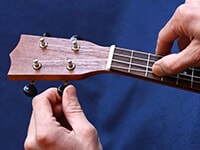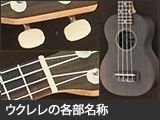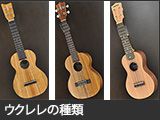Hello, this is Conservario.
Arpeggios create a different atmosphere from strumming.
For those who may not know, arpeggios are a playing technique where the notes of a chord are played separately rather than simultaneously.
While strumming involves playing all four strings at once with a ‘jang-jang!’ sound, arpeggios are played one note at a time, like ‘pon-pon-pon-pon!’
This technique works perfectly for ballads and other slow, emotional songs.
However, arpeggios come with their own set of challenges, making them difficult for many players.
If you struggle with arpeggios, don’t worry!
In this article, I’ll introduce some tips to help you connect arpeggios smoothly.
■ Tip #1: Check If All the Chord Notes Are Ringing Clearly
When playing arpeggios, most people focus on their right hand.
Since the right-hand movement is completely different from strumming, this makes sense.
However, many players get so caught up in their right hand that they don’t notice if their left-hand chord shapes are causing some notes to be muted or unclear.
With strumming, even if you don’t press a chord perfectly, the sound blends together, making it less noticeable.
Since strumming plays multiple strings at once with a ‘jang-jang-jang-jang!’ sound, minor imperfections in finger placement are less noticeable.
However, arpeggios involve plucking each string individually.
This makes any muted or unclear notes stand out.
If even one string doesn’t ring properly, the performance might sound like:
‘pon-pon-(mute)-pon!’, completely disrupting the flow of the music.
So, whenever you play arpeggios, always check that every note in your chord rings clearly.
When practicing arpeggios, focus on proper chord finger placement before worrying about right-hand technique. As a bonus, if you develop the habit of carefully checking your chord clarity during arpeggio practice, you’ll also improve your accuracy when strumming—ultimately enhancing your overall playing quality!
■ Tip #2: Let the Previous Chord Ring Until the Last Moment
This is a crucial technique. Honestly, if you can master this, your arpeggios will instantly sound much smoother.
A common mistake beginners make is cutting off chords too early during a chord change, making the performance sound choppy.
A well-connected arpeggio performance should sound like this:
‘Pon-pon-pon-pon → Instant chord change → Pon-pon-pon-pon...’
However, many beginners’ performances end up like this:
‘Pon-pon-pon-po... → Awkward chord change → ...n-pon-pon-pon-pon...’
The performance continues smoothly with a steady and connected rhythm.
This cannot be considered a musical performance.
The reason this happens is that the player is not paying attention to rhythm.
If you only focus on producing clean sounds without considering rhythm or note duration, you may end up playing with the mindset that as long as you hit the notes, it’s fine. However, this leads to a choppy performance, and often, the player doesn’t even notice it.
If this habit persists, no matter how much you practice, you will never achieve a smooth and beautiful arpeggio.
For those struggling with this issue, I highly recommend rhythm training.

Here’s an easy way to practice rhythm.
You won’t need your ukulele for this exercise.
Put it aside.
Instead, use your hands to gently tap your knees while counting 1, 2, 3, 4 out loud in a steady rhythm. It should sound like:
“One, two, three, four.”
Keep this going for a while.
Once you feel comfortable, keep tapping but replace the spoken count with a vocalized arpeggio rhythm. Say something like:
“Pong, pong, pong, pong.” (Think of it as singing the rhythm rather than just speaking it.)
Great job! Now take a break.
Were you able to maintain an even rhythm while vocalizing?
This type of rhythm training is one of the most effective ways to develop smooth playing.
When you hold a ukulele, it’s easy to get distracted by hand positioning and finger movement, making it harder to focus on rhythm.
That’s why I highly recommend practicing rhythm without the instrument first.
■ Summary
In this article, I explored how to play smooth and beautiful arpeggios on the ukulele.
The second half focused heavily on rhythm, and that’s because rhythm is the foundation of music.
Perhaps the most important element.
If your tuning is slightly off or your finger placement on the first fret isn’t perfect, only you and experienced musicians might notice.
However, even a complete beginner can tell when the rhythm is off.
When it speeds up, slows down, or stops unexpectedly, it’s no longer music.
No matter how many difficult chords you can play or how fast and intricate your right-hand technique is, if your rhythm is shaky, the performance will sound incredibly unpolished.
That’s why I strongly recommend starting with simple rhythm exercises.
Things like finger movements for chord changes can be refined later, but if you first build a solid rhythmic foundation, your ukulele playing will improve dramatically and become much more enjoyable.
Thank you for reading, and happy playing!
The “sound & person” column is made up of contributions from you.
For details about contributing, click here.











![[Enjoy the Ukulele Even More!] Listen to Skilled Musicians Play](/contents/uploads/thumbs/5/2022/3/20220328_5_17282_1.jpg)
![[Enjoy the Ukulele Even More!] Are You Practicing A Lot, But Still Can’t Get the Chords to Sound Good?](/contents/uploads/thumbs/5/2022/3/20220328_5_17277_1.jpg)
![[Enjoy the Ukulele Even More!] Mastering Downstrokes and Upstrokes](/contents/uploads/thumbs/5/2022/3/20220328_5_17270_1.jpg)
![[Enjoy the Ukulele Even More!] What to Do When Your Favorite Song Seems Too Difficult](/contents/uploads/thumbs/5/2022/3/20220328_5_17261_1.jpg)
![[Enjoy the Ukulele Even More!] How to Make the Most of Instructional Books and Lesson Videos](/contents/uploads/thumbs/5/2022/3/20220325_5_17245_1.jpg)
![[Enjoy the Ukulele Even More!] Hacks to Keep Your Strings Going Longer](/contents/uploads/thumbs/5/2022/3/20220317_5_17094_1.jpg)
 ウクレレのチューニング方法
ウクレレのチューニング方法
 ウクレレの各部名称
ウクレレの各部名称
 ウクレレの種類
ウクレレの種類
 ウクレレスタートガイド
ウクレレスタートガイド
 めちゃラク!ギター講座
めちゃラク!ギター講座
 ウクレレ初心者講座
ウクレレ初心者講座















